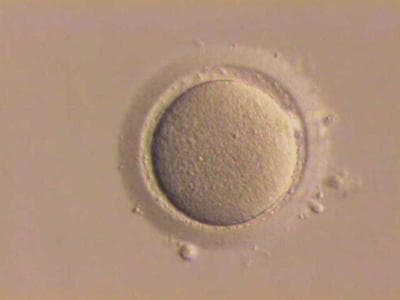Advertisement
America's First Test-Tube Baby Reflects On The History Of IVF

On July 25, 1978 in Manchester, England, Dr. Robert Edwards and his medical team wheeled a 30-year old pregnant woman into an operating room.
"This is Mrs. Brown who is now 38 weeks pregnant...."
Lesley Brown had been Dr. Edwards' patient for a little over a year.
"All our tests have shown that the growth of the baby is satisfactory..."
Dr. Edwards performed a quick, confident Cesarean section on Lesley Brown. And in the grainy video taken in the operating room, you see Dr. Edwards reaching gently into Lesley Brown's womb, as he says...
"This was a girl, as was expected... baby's in pretty good condition after birth."
Robert Edwards died this week at the age of 87.
Today, America's first test-tube baby joins us for a look back at the earliest days of in-vitro fertilization here in Massachusetts.
Guests
Elizabeth Comeau, senior health and wellness producer at boston.com and the first test-tube baby in the U.S.
Robin Marantz Henig, science writer and the author of "Pandora's Baby: How the First Text Tube Babies Sparked the Reproductive Revolution"
Selwyn Oskowitz, co-founder of the Boston IVF clinic, a clinical assistant professor of reproductive biology at Beth Israel Deaconness Hospital. He delivered the first IVF baby born in MA.
More
WBUR "The man whose research led to the world's first test-tube baby more than three decades ago, has died at age 87. Robert Edwards, who later won the Nobel Prize, began experimenting with in vitro fertilization, or IVF, in the late 1960s. His work, controversial at the time, eventually led to the birth of the world's first "test tube baby," Louise Brown, on July 25, 1978.
This segment aired on April 11, 2013.